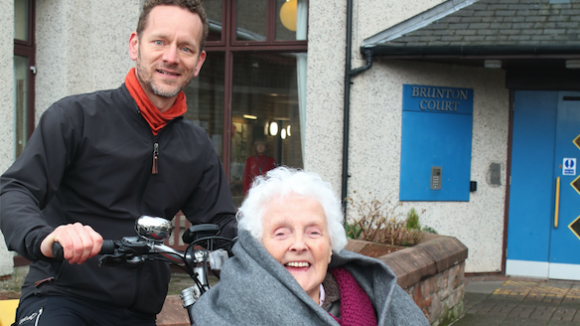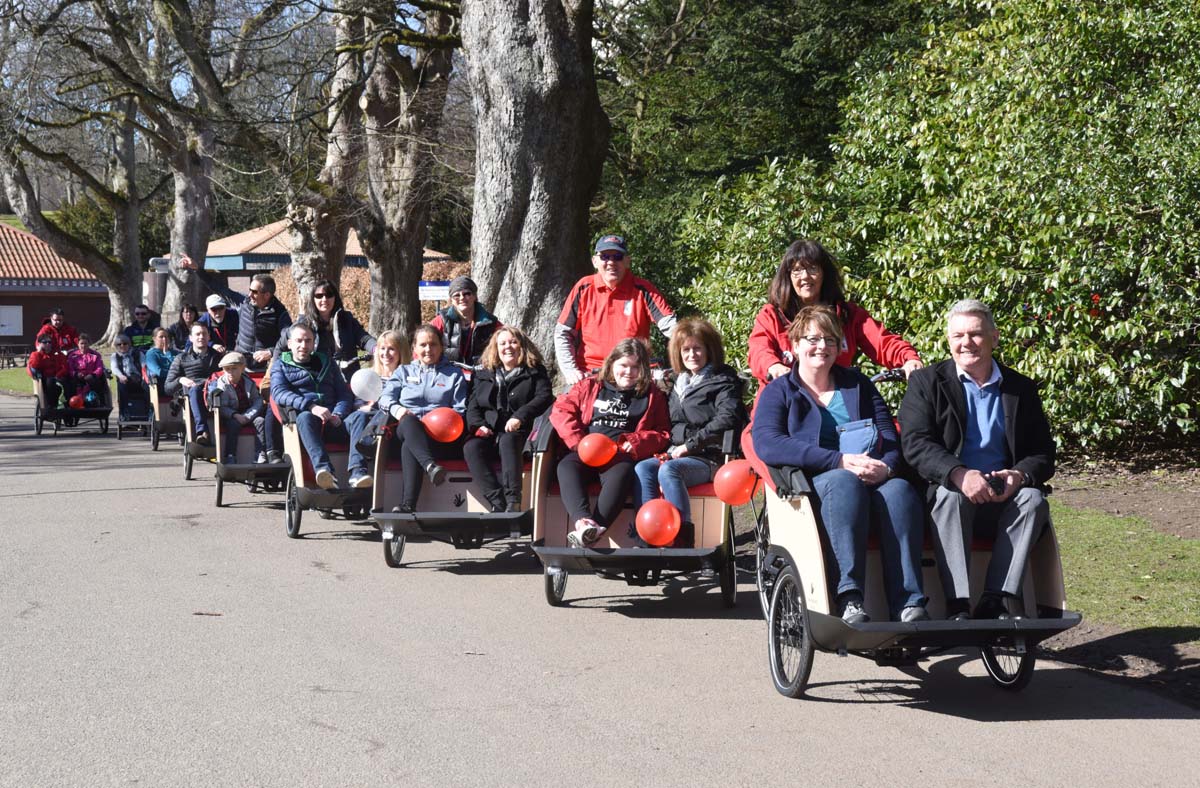We are building a conversation around the ten principles of a caring place. In part two of our Cycling Without Age Scotland blogs, volunteer Hamish Brown talks about his experience as a volunteer with the innovative transport project. This relates to principle one: friendly and accessible transport. You can read part one of this blog here.
Reconnecting with the outside world
I live in Musselburgh and am one of about 50 volunteer pilots for the Musselburgh chapter of Cycling Without Age Scotland. I cycle pretty much everywhere and certainly miss it when I am off the bike for any length of time. I thought it was an inspired way to help older people who can no longer get around in the same way to reconnect with the outside world.
I am also a bike-tech fan, so was interested to get acquainted with the e-bikes. I think e-bikes are going to be more popular than people currently think. E-bikes could help encourage groups who are still hesitant about making cycling their main form of transport. These could be older people, those who do not want to break a sweat, and maybe even those sold on the car-as-status idea.
How does Cycling Without Age work?
There are three passenger pickup points: a care home, a sheltered housing complex and a day centre. Each has a signup sheet for passengers who fancy going out. Rides last about an hour. They either go along the waterfront to Fisherrow Harbour or up to the River Esk path, known as The Grove.
Stop-offs are numerous, there is often something interesting going, and you always get chatting to passers-by. After initial training sessions, pilots claim shifts on the rota. This means you can vary the passengers you take out or get to know specific individuals if you know their regular slot.
Community connections
What is the most important aspect of Cycling Without Age for you?
Many of our passengers grew up locally and have a deep connection with landscape and environment. So it is great to hear their tales of how things have changed, and the shenanigans they used to get up to. It has definitely deepened my own relationship with the area: it is a regular journey through it that I would otherwise not take. It is easy for all of us to stick to our routines.
Also, the nature of the trishaw means you get an accurate picture of how cycle-friendly the local path and road network is. I have cycled a lot in other cities where it has been clear that the more bikes there are on the road, the safer it becomes for everyone.
Initiatives like this help with that, and also in normalising non-car transport, encouraging others to ditch the car for the bike. Ideally they also provide those at government level with the courage to make the bold policy decisions needed.
What have been the benefits for the people you take out for a ride?
I would like to think that they enjoy it, as they keep signing up! People of all ages find cycling good for their mental health. Cycling Without Age goes some way to combat the social isolation that can affect us all, but particularly older people. I think it might also appeal to our passengers' thrill-seeking side. I have sat on the front of the trishaw during training and it is more exhilarating than you might think!

Local history
Do you have any interesting stories to share from your experience volunteering with Cycling Without Age?
I recently took one of our regular passengers, Joyce, out on her 91st birthday. She lived all her life on the street next to mine, and regaled me with tales of her and her brothers' escapades. She is a great storyteller. I learned all about the Scrappy Castle, a tenement block that no longer exists that was built from salvaged stone.
On a different journey, we got talking at the harbour to the brother of Musselburgh-born footballer John White, AKA The Ghost, who played for Tottenham Hotspur before being killed by a lightning strike in 1964, aged 27.
What would you say to someone who was considering becoming a volunteer?
I would highly recommend it. Every ride is different and talking with people you would not ordinarily meet gives you a new perspective on your own community and environment. Musselburgh is currently at full capacity for new pilots, but you can arrange to visit for a passenger journey via the Hollies Day Centre. There are several other chapters in Scotland, or you could consider starting your own.
About Cycling Without Age Scotland
Cycling Without Age Scotland aims to “enhance and enrich lives by giving elderly and disabled people access to the beautiful outdoors through our pioneering trishaw rides, access which is denied to so many people simply because of age or limited mobility.” Find out more about Cycling Without Age Scotland.
Image credit: Ewan Dawson
Share your story
If you would like to share your knowledge and experiences of what it takes to design caring places, get in touch.

